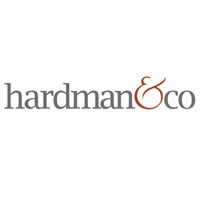Historically, AstraZeneca (LON:AZN) was a leading global pharmaceutical company, but it has slipped down the rankings following a period of patent expiry on major drugs, notably Nexium, Losec and Seroquel. Understandably, the financial performance, particularly operational cashflow, has suffered during this period. Over the past two months, there have been two events which I did not expect to see during my time as a pharmaceuticals analyst in the City in the absence of major corporate activity. First, despite a considerable difference in the size and market share of their respective pharmaceuticals businesses, both globally and in the US, the market capitalisation of AstraZeneca (AZN) has exceeded that of GlaxoSmithKline (GSK). Secondly, AZN needed a Placing of shares to bolster its balance sheet immediately after paying its final dividend for 2018. As an experienced industry follower, these events set off ‘alarm bells’ in my mind.
► Placing: On 27 March 2019, AZN paid its final dividend for fiscal 2018, which cost the company $2.43bn. Just two days later, the company announced a Placing of shares at 6050p, a discount of 6.7% on the previous close and at an estimated cost of $70m, to raise $3.5bn for working capital.
► EPS: Like most companies, AZN uses a number of non-GAAP measurements to generate a ‘core’ EPS figure which is used in management KPIs and to calculate dividend cover. Because this calculation includes profits on asset disposals it overstates the performance vs. cashflow per share (CFPS).
► Cashflow: AZN has been through a 10-year period where operational cashflow has been in decline, to a point where the dividend has been uncovered for four years. Payment of the 2018 final dividend and an upfront payment to Daiichi Sankyo for trastuzumab has left net debt at ca.$17.5bn (net debt/EBITDA 2.5x).
► Dividend policy: AZN has a policy to “…maintain or grow dividend per share…”, which is a key KPI on which long-term management remuneration is based. However, payment of a large dividend, followed two days later, by a cash call to shore up its balance sheet, at huge cost to shareholders, seems inappropriate.
► Investment summary: AZN is a good and well-run company, with one of the more promising R&D pipelines in the industry. However, the audit committee’s comfort with the over-statement of underlying operating performance through the use of ‘core’ EPS, has left the dividend uncovered, resulted in increased debt, and necessitated a Placing of shares to raise fresh capital. The current market valuation leaves little scope for any R&D disappointments.




